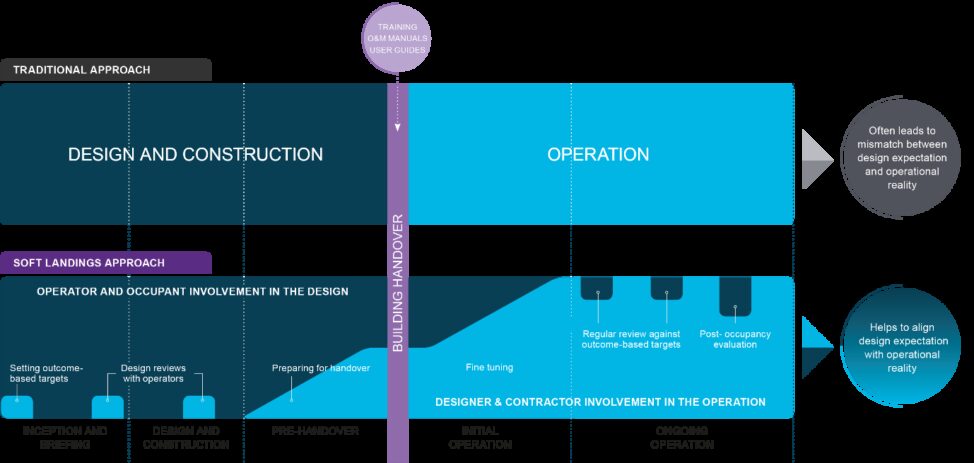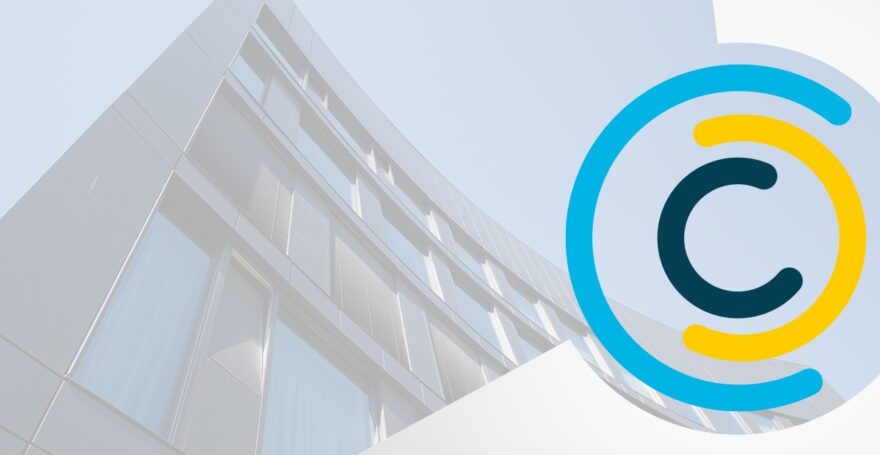Is soft landings finally taking off?

By Dave Cheshire, London
All too often, occupants are the crash-test dummies of the construction industry. In the car industry, dummies are used to test out prototypes of cars. In the construction industry, once the occupiers move in they crash-test the functionality and environment of the building.
It is mandatory!
The Soft Landings initiative started nearly 14 years ago with the aim of avoiding giving occupants and operators an uncomfortable experience when the building is first handed over. It is now gaining traction because Government Soft Landings (GSL) was mandated on all Government projects from 2016.
Closing the gap
A smooth transition from design to operation means that the building can be fine-tuned to run in the way they were intended. Continued support from designers and constructors after completion helps to iron out the bumps and early involvement of the occupants and operators in the design process helps to ensure that there is no gap between expectations and reality. It’s really difficult to get buildings to work properly, without this attention, as all buildings are prototypes and can only be tested when they are occupied.

Reaping the benefits
The benefits are: clear visibility on the likely performance of the building from the start of the project; reduced operating costs, carbon emissions and water use; fewer complaints from occupants (and operators!) relating to comfort conditions; no need to resort to defects liability claims to fix problems; demonstrable performance outcomes that are invaluable when justifying public sector building projects.
Feedback loop
Designers and constructors get very little feedback on whether their buildings work as intended, which means that there is the real risk that the same mistakes are repeated. Analysis and a proactive approach to lessons learned is an inherent part of GSL and helps to close the loop and allow designs to evolve with each iteration. It is remarkable how rarely anyone asks ‘what went wrong on the last project you did?’ The resulting answers have proved invaluable.
Up and running
Implementation of the Government Soft Landings is underway on 10 South Colonnade – one of the new Hubs buildings as part of the consolidation of the Government estate – and our team is currently running several other Soft Landings projects for a variety of clients.
As active members of the Building Services Research and Information Association (BSRIA) Soft Landings User Group, we were involved from the very inception of soft landings; contributing to documents such as Procuring for Soft Landings and writing CIBSE guidance on evaluating operational energy performance at the design stage, that is a crucial element of the process.

It’s never too early
Government Soft Landings starts at the inception of the project with the aim of ensuring that the interests of those who will use the asset are aligned with those who are delivering it. GSL advocates a collaborative approach that involves the whole supply chain including designers, constructors, operators and the occupants.
At RIBA Stage 1 GSL requires that outcome-based targets are set and agreed in relation to both social, economic and environmental performance. This relates to energy, water and waste operating costs and environmental performance along with social targets for the health and wellbeing of occupants.
The end is the beginning
Our experience includes appointment as Soft Landings Champion for UEL Library (see CIBSE Journal article for more detail). In addition to building a design stage energy model (based on realistic occupancy patterns, small power loads and internal heat gains) to better evaluate the operational performance at the design stage, we re-ran the model after handover using the actual operating regimes. This aided our analysis and reporting of energy use breakdowns for lighting, heating, cooling, etc. enabling us to provide resolutions as required (an example of the energy breakdown and ranges that can be gained from CIBSE TM54 energy modelling is shown in figure 1).
Working with the client during the two years of post-occupancy monitoring and fine tuning, we tweaked the building performance to refine the ventilation and lighting controls to bring down the carbon emissions, energy use and optimise the internal comfort. The energy savings from the lighting alone were 16%. In fact the occupants love the building, the feedback from students includes: ‘can’t keep away’ and ‘it’s terrific – I love it’.
We are even using Virtual Prototyping to allow occupants to experience the space and providing aftercare to ensure that buildings are performing to their design intent.
What’s next?
All Government projects are required to implement Government Soft Landings, so there is a great opportunity to learn the lessons from each project and improve outcomes on every project. Fundamentally, Government Soft Landings is about being able to deliver on our promises, save resources and money and save occupants being the crash-test dummy for our buildings.
